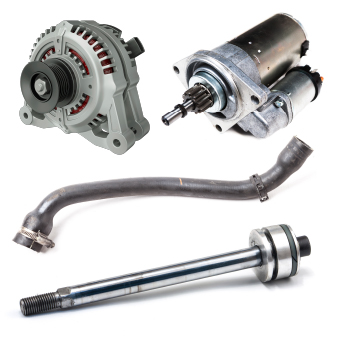It’s hard to think of an important aspect of dealer management that is more neglected than parts operations management training.
Your Parts Manager can be responsible for warehouse security and safety, inventory control, picking, and shipping efficiency, prompt response to “back counter” service department requirements, parts warranty claims, parts marketing and sales, and an attractive “visual merchandising” counter sales area for external customers. This is a big, big job.
In addition, most Parts Managers have the largest purchasing checkbook in the dealership. Despite these facts, many dealer executives often don’t structure best practices in their parts department and ensure proper managerial oversight is in place. The result includes a broad spectrum of costly problems:
- Excessive stock
- Obsolete stock
- Poor turns
- Low margins
- Poor off-shelf fill rates hindering labor productivity
- Poor off-shelf fill rates causing customer anger
- Ineffective annual parts return that results in large amounts of dead stock, frozen cash assets, and wasted storage space
- Inventory shrinkage from theft, non-charged out items, and unsecured parts space
What is the issue? A large portion of the Parts Manager’s responsibility is analytical. Whereas, the primary aptitude and challenge for a Service Manager is Supervisory Leadership. Yet, in many dealerships, neither manager is provided adequate training in his/her primary area of responsibility.
The Parts Manager is often given neither the time nor training to adequately manage the inventory. Inventory management computer applications were first developed in the early 1930s. Since then, software vendors have released increasingly sophisticated inventory management tools. But, these tools are only as effective as the manager who uses them.
We frequently come in contact with dealers who have more than 40% of their parts inventory value in obsolete stock, that is, no movement in 12 months. In addition, the typical dealer could reduce its total number of line items by 10-15% because of low usage. And, each line item could have as much as 5-10% excess inventory. You don’t want your inventory to be filled with unnecessary, rarely used parts.
I am not saying you should simply reduce your stock investment. I am recommending that your Parts Manager be trained on how to use available technology. He needs to learn how to make and manage smarter inventory investments. The primary Parts Management tool today is the Stock Status Report.
Do they really manage your Parts Department and inventory or is the job that of a “super parts counterman” flying in smaller and smaller concentric circles until they disappear up into a puff of smoke?
Our dealer management surveys demonstrate that Parts Management responsibilities can be the most stressful in the dealership. And, when management “burnout” occurs, this is the epicenter.
To be effective, your Parts Manager must be given the tools, the training, and most importantly, the time to do an effective job. The successful Parts Manager must skillfully balance the requirement to achieve 4 – 6 inventory turns a year with an off-shelf fill rate for your primary lines of over 96.5%. It’s easy to do one or the other, but you must ensure that both are accomplished.

